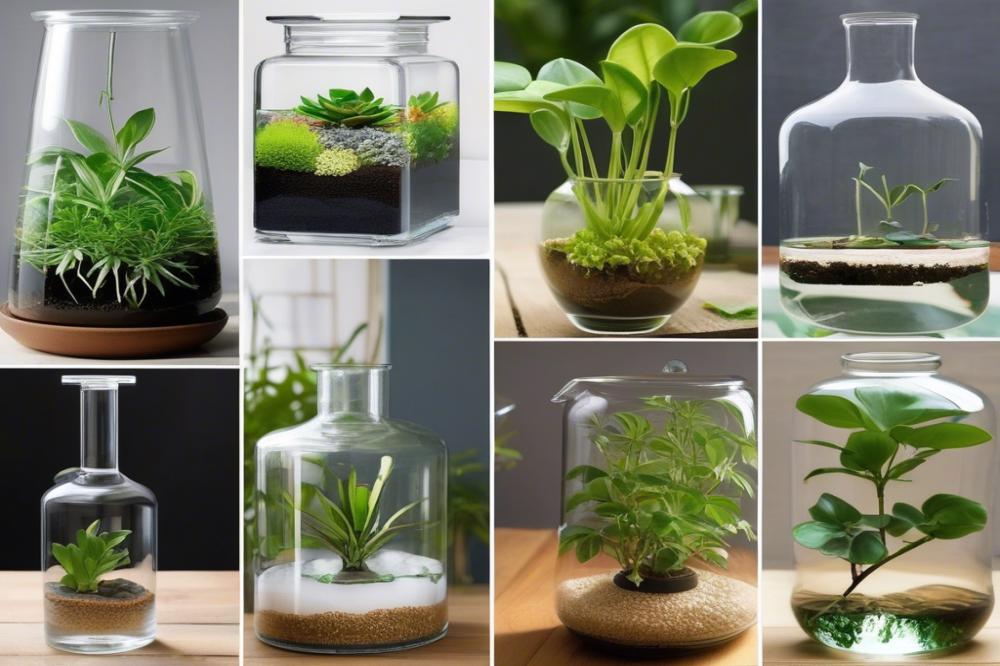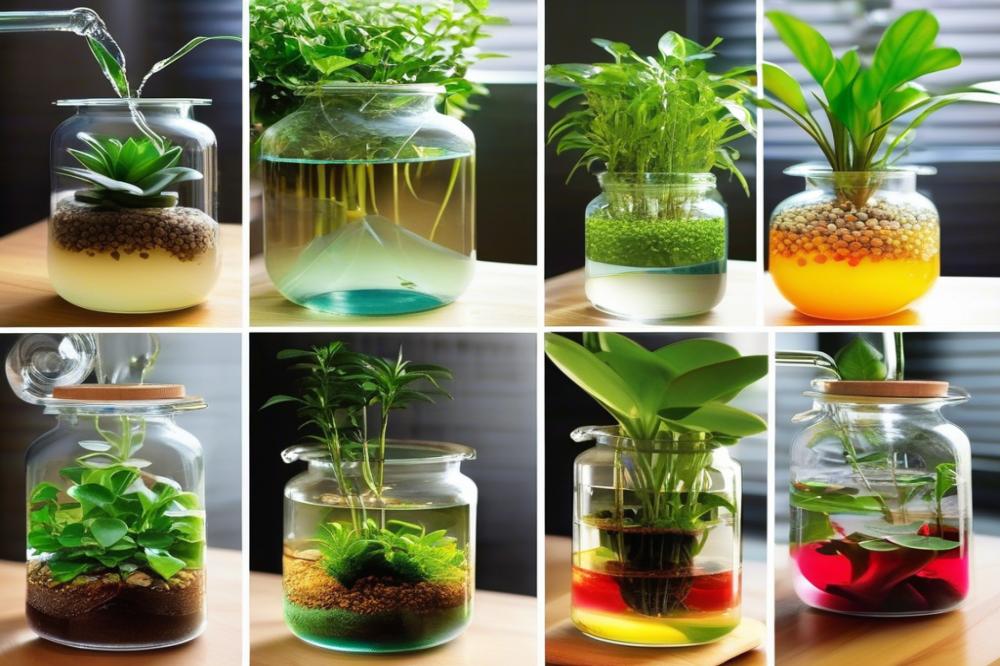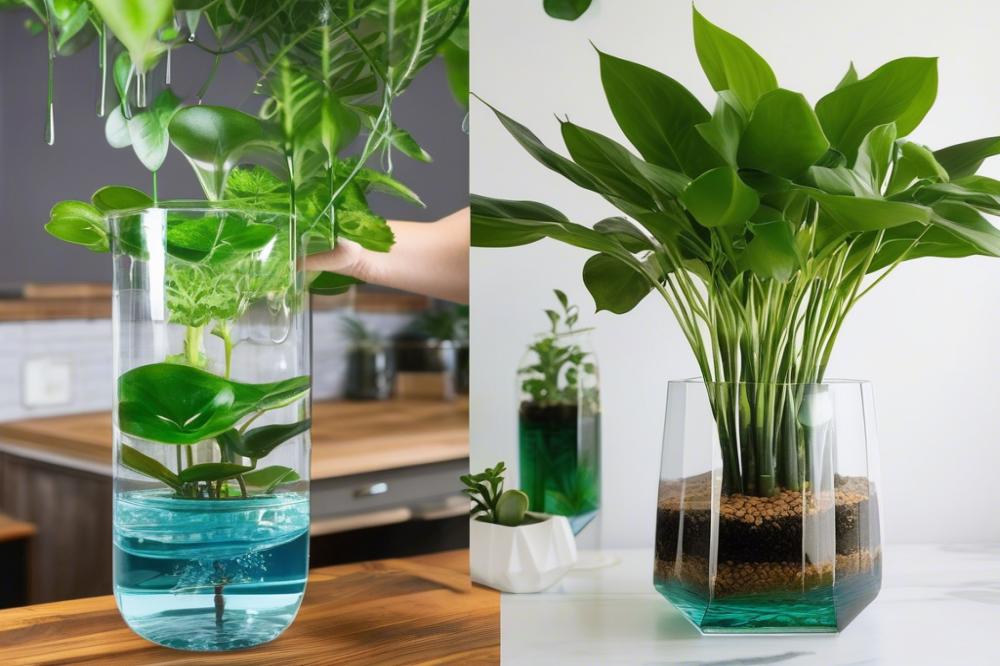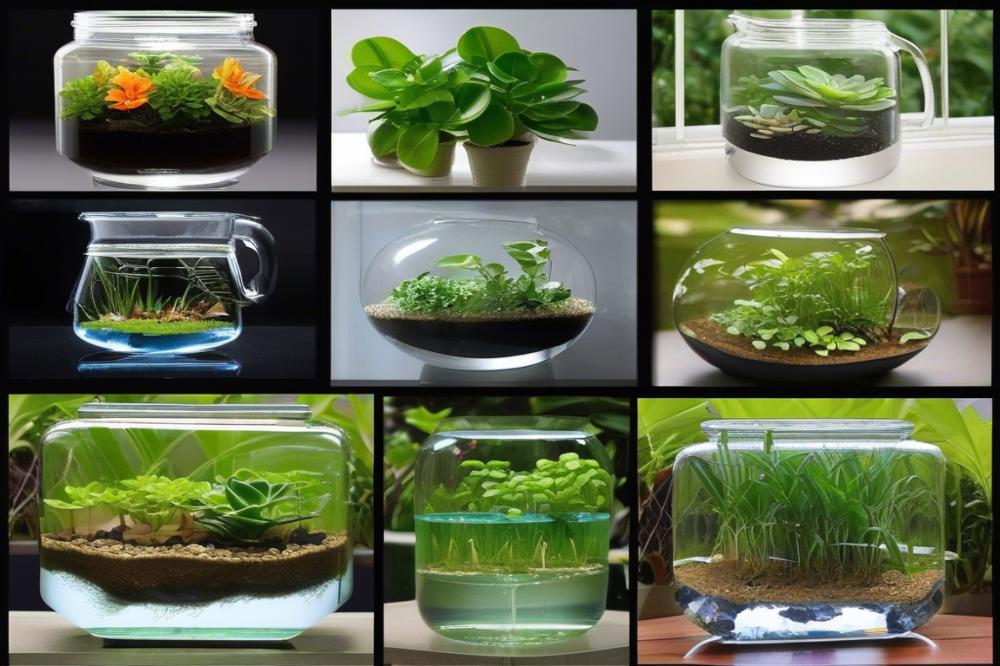How to Use water propagation for Quick Results
water propagation is a method for growing new plants from cuttings. Instead of planting directly in soil, gardeners submerge these cuttings in water. This technique has gained significant popularity among indoor gardening enthusiasts. Many people find it fascinating to watch roots develop right before their eyes. It’s a simple but effective way to multiply your houseplants.
Fast results excite many plant lovers. When you use plant cuttings in water, you often see roots forming in just a couple of weeks. This quick rooting process allows for faster growth and helps boost your collection of greenery at home. Instant gratification in plant care is rewarding; it keeps you motivated in your gardening journey.
Sharing tips on propagation techniques can benefit fellow enthusiasts. DIY propagation provides a cheap and fun way to expand your indoor space. Moreover, watching plants develop is a fulfilling experience. Home gardeners can track their progress and appreciate the small victories along the way. When cuttings flourish, it reinforces the joy of nurturing plants.
In summary, using water propagation for plant propagation is a fantastic way to achieve quick results. Anyone looking to enhance their indoor garden can take advantage of this method. With a few plant cuttings and a clear vessel, you can embark on an exciting journey of growth and discovery.
Understanding Water Propagation


Water propagation refers to the method of growing plant cuttings in water until they develop roots. This technique is popular among indoor gardening enthusiasts because it allows you to monitor the growth process closely. The main purpose is to create new houseplants from existing ones easily and efficiently. By using this method, gardeners can achieve fast rooting, which speeds up the overall growth cycle.
When comparing water propagation to other propagation techniques, several differences emerge. On one hand, soil propagation requires a more hands-on approach and may involve a longer wait for successful rooting. In contrast, water propagation gives a clear view of the root development without the need to dig in soil. The visibility can be encouraging, especially for those new to plant care. Moreover, the simplicity of this technique makes it a favorite for DIY propagation projects.
The science behind rooting in water involves the natural response of plants to stress. When plant cuttings are placed in water, they experience trauma from being separated from their parent plant. This encourages the formation of new roots as the plant seeks to survive. In simple terms, the cutting redirects its energy into root development. Thus, a cutting that sits submerged in water can quickly sprout roots, making it an effective and easy propagation method for gardeners.
Choosing the Right Plant Cuttings


Not all houseplants are ideal candidates for water propagation. It’s important to identify which ones thrive in this method. Popular choices include pothos, spider plants, and philodendrons. These plants respond well to rooting in water and can give you fast results. Starting with the right species makes your indoor gardening journey smoother.
After picking a suitable houseplant, focus on selecting healthy cuttings. Look for stems with vibrant leaves and no signs of disease. Avoid any cuttings that appear yellowing or wilted. Healthy cuttings are more likely to grow roots quickly. Examine the nodes on the stems, as these areas are where new roots will emerge. Aim for cuttings that are at least four to six inches long for the best results.
The timing of when you take cuttings can significantly affect your success. Early spring or late summer are ideal times to propagate plants. During these seasons, many houseplants are in their active growth phase. Taking cuttings during these times allows for easier propagation techniques. More nutrients and energy are available in the plant, leading to faster rooting.
Taking note of the season can really boost your plant care efforts. Execute your plant cuttings plan when conditions are optimal. Combined with the right plant selection, you’ll see amazing results. For those starting their DIY propagation journey, keeping these tips in mind will give you the best chance at success.
Step-by-Step Guide to Water Propagation


Creating new houseplants through water propagation can be an exciting adventure. Follow this detailed process for easy propagation of your favorite varieties. First, gather the necessary materials. You’ll need clean containers, scissors, and, of course, healthy plant cuttings.
Start with selecting the right cuttings. Look for healthy stems with several leaves. Avoid mature stems that show signs of damage or disease. Snip a cutting about six inches long. Make the cut just below a node, which is where leaves connect to the stem. This node is essential for rooting in water.
Preparing Cuttings for Rooting
After obtaining your cuttings, remove the leaves on the lower half. This step prevents them from rotting in water. Place your cuttings in a glass of water, ensuring the nodes are submerged. The remaining leaves should remain above the water line. Fresh cuttings thrive in bright, indirect sunlight. Avoid harsh direct sunlight, which can scorch them.
Keep an eye on your containers. Water levels can drop due to evaporation. You must replace evaporated water regularly to maintain the right conditions. While waiting for roots to form, patience is key. Roots typically take a few weeks to begin forming.
The Importance of Water Quality
Water quality plays a crucial role in successful propagation techniques. Always use purified or distilled water. Tap water can contain chemicals that negatively impact root development. Change the water every few days to prevent stagnation and buildup of bacteria.
As you observe your cuttings, look for new root growth. Once they reach around two inches long, you can think about transferring them to soil. This transition from water to soil should be seamless for healthy cuttings. Proper plant care will be necessary during this process to promote continued growth.
Utilizing these gardening tips will fast track your success. Enjoy the satisfaction that comes with DIY propagation. With attention and care, you’ll soon have a whole collection of thriving plants nurtured by your own hands.
Creating an Ideal Environment for Fast Rooting


Many factors influence the success of rooting plant cuttings in water. Light plays an essential role in photosynthesis, which gives plants energy. However, too much direct sunlight can harm delicate cuttings. Bright, indirect light is often best. It provides enough brightness without risking burns. Aim for a spot where they can be illuminated for a good part of the day.
Temperature significantly impacts how quickly roots form. A warmer environment, typically between 70°F to 75°F (21°C to 24°C), encourages faster growth. Cold temperatures can slow down rooting, so be cautious about placing cuttings near drafts or cold windows. Keeping them in a consistently warm area can lead to quicker results.
Humidity levels also matter greatly. High humidity can create a mini greenhouse effect, promoting growth. Consider placing cuttings in a clear plastic bag or a terrarium to trap moisture. This simple technique can help maintain humidity levels and keep the air around your cuttings moist.
Gardening tips for enhancing root growth include using clean containers and fresh water. Always change the water every few days to prevent stagnation and bacterial growth. This practice contributes to healthier and faster rooting. Additionally, using a small amount of root stimulant can boost your success rate.
Optimal conditions for indoor gardening can be achieved with some adjustments. If possible, invest in a grow light if natural light is limited. Many LED options mimic sunlight, giving your cuttings the energy they need. When using artificial lights, position them just a few inches above the plants for optimal growth without overheating.
Consider the placement of your cuttings as well. A warm windowsill might seem perfect, but too much temperature fluctuation can hinder progress. Placing them on a stable, flat, and warm surface can create a better atmosphere. It also helps to group houseplants together. This method boosts humidity and creates a more supportive environment.
Maintaining a consistent watering schedule is necessary for plant care. Water levels should be sufficient to cover the stems submerged in the container. This strategy provides the cuttings with proper hydration and prevents them from drying out. Remember, each plant species has unique needs, so adjust your routine based on the specific requirements of your cuttings.
Finally, patience is crucial when utilizing propagation techniques. Fast rooting may not happen overnight. Some plant cuttings root slower than others, and that’s perfectly okay. With the right care and conditions, you will see them thrive. Ensure that each moment spent caring for your cuttings gets you closer to lush, new plants
Common Challenges and Solutions
Starting with plant cuttings can lead to several issues, especially for beginners. One common problem is the development of rot. This occurs when the cut ends of the plants sit in stagnant water for too long. To combat this, change the water every few days. Fresh water helps promote air circulation and discourages harmful bacteria.
Another challenge faced during rooting in water is inadequate light. Houseplants need bright, indirect sunlight to thrive. If cuttings are too far from a light source, they may become weak and leggy. Ensure that your cuttings receive plenty of light, and if natural light is limited, consider using a grow light to support growth.
Pests can also be an issue while propagating indoors. Tiny insects may appear, feeding on your cuttings and causing damage. Regularly inspect your plants for signs of infestation. If you notice any pests, clean the leaves with a gentle soap solution. This will help keep your cuttings safe as they develop roots.
Patience is vital during the propagation phase. Many people expect to see rapid results from their efforts, but not all cuttings root quickly. Fast rooting can take time, depending on the plant species. By staying patient and following good practices, you’ll eventually reap the rewards of your hard work.
Plant care is essential throughout the propagation process. Providing the right conditions for your cuttings is key to success. Keep in mind that overwatering can lead to issues too. Always check the moisture levels of the water, and be careful not to leave them submerged for too long.
Lastly, remember that different propagation techniques may yield varying results. Some plants root easily, while others might struggle. Trying out various methods can help you discover what works best for your specific plants. DIY propagation is a fun way to experiment and learn in your indoor gardening journey, turning challenges into enjoyable experiences.
Wrapping Up
Water propagation offers a simple way to grow new plants from cuttings. This method provides clear visual feedback, allowing anyone to witness roots developing. You’ll find it satisfying to observe the transformation of a small cutting into a thriving plant. The process is not only enjoyable but also cost-effective. By using just water, you can expand your indoor garden without needing to invest in soil or pots right away.
Trying out these propagation techniques with your houseplants can be a rewarding experience. It’s a chance to nurture your green thumb while watching your plant cuttings flourish. Anyone can quickly start this DIY project, regardless of their gardening expertise. As you see roots form, your confidence will grow along with your collection.
The beauty of this practice lies in its accessibility. You don’t need fancy tools or specialized knowledge. Just a few jars, some water, and your favorite plants are all you need. So, why not give it a shot? Embrace the art of propagation, and watch your indoor garden flourish with minimal effort.



